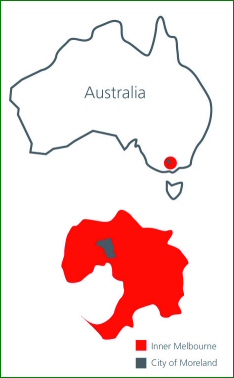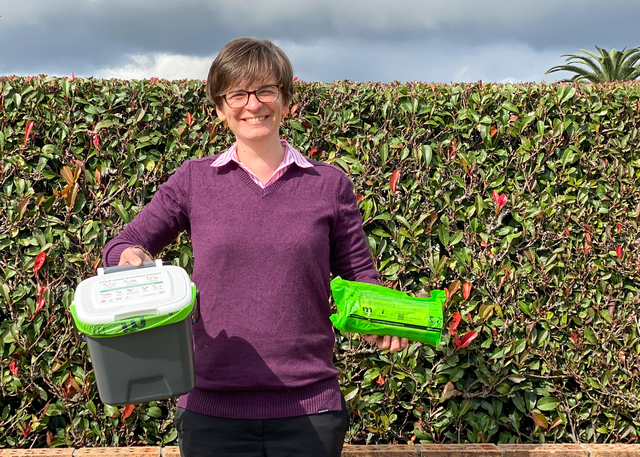The City of Moreland is located on the northern edge of Melbourne’s central business district, less than eight kilometres from Melbourne’s GPO. Covering an area of 51 square kilometres, the city comprises the former Cities of Brunswick and Coburg and the southern parts of the former Broadmeadows municipality. The population of Moreland has been fairly stable since 1996, at around 136,000.
With the influx of young professionals into Melbourne’s inner city suburbs, the City of Moreland has become a highly diverse municipality with a mixture of income levels and lifestyles. It can be characterised as a municipality with a fairly stable but ageing population, which is culturally and linguistically diverse. Many different cultural groups live in Moreland and more than 100 different languages are spoken at home by residents of Moreland. Moreland’s motto is ‘one community, proudly diverse’.
Just over one third of Moreland residents were born overseas. Of the total Moreland population, 61 per cent were born in Australia. Of those residents born overseas, 88 per cent were born in non English-speaking countries and 12 per cent were born in English speaking countries. The main countries of birth of Moreland residents, apart from Australia, represent the traditional migrant groups from Europe, including Italy, Greece and the United Kingdom.
Households in Moreland have changed greatly over the past decade, with decreasing proportions of family households and increasing one-person households translating into smaller household sizes. Significant differences in socioeconomic advantage and disadvantage occur across the municipality.
It is expected that the Moreland population will increase to more than 150,000 by 2031, an increase of some 15,000 residents. One contributor to the growth of Moreland’s population will be the continued ageing of the population. It is estimated that the number of residents aged over 75 years will increase from 10,025 in 2001 to 13,436 in 2031. As the population continues to age, it is predicted that the number of one-person households will increase. This will cause the median household size to decrease from 2.5 persons per household in 2001 to 2.3 in 2031.








